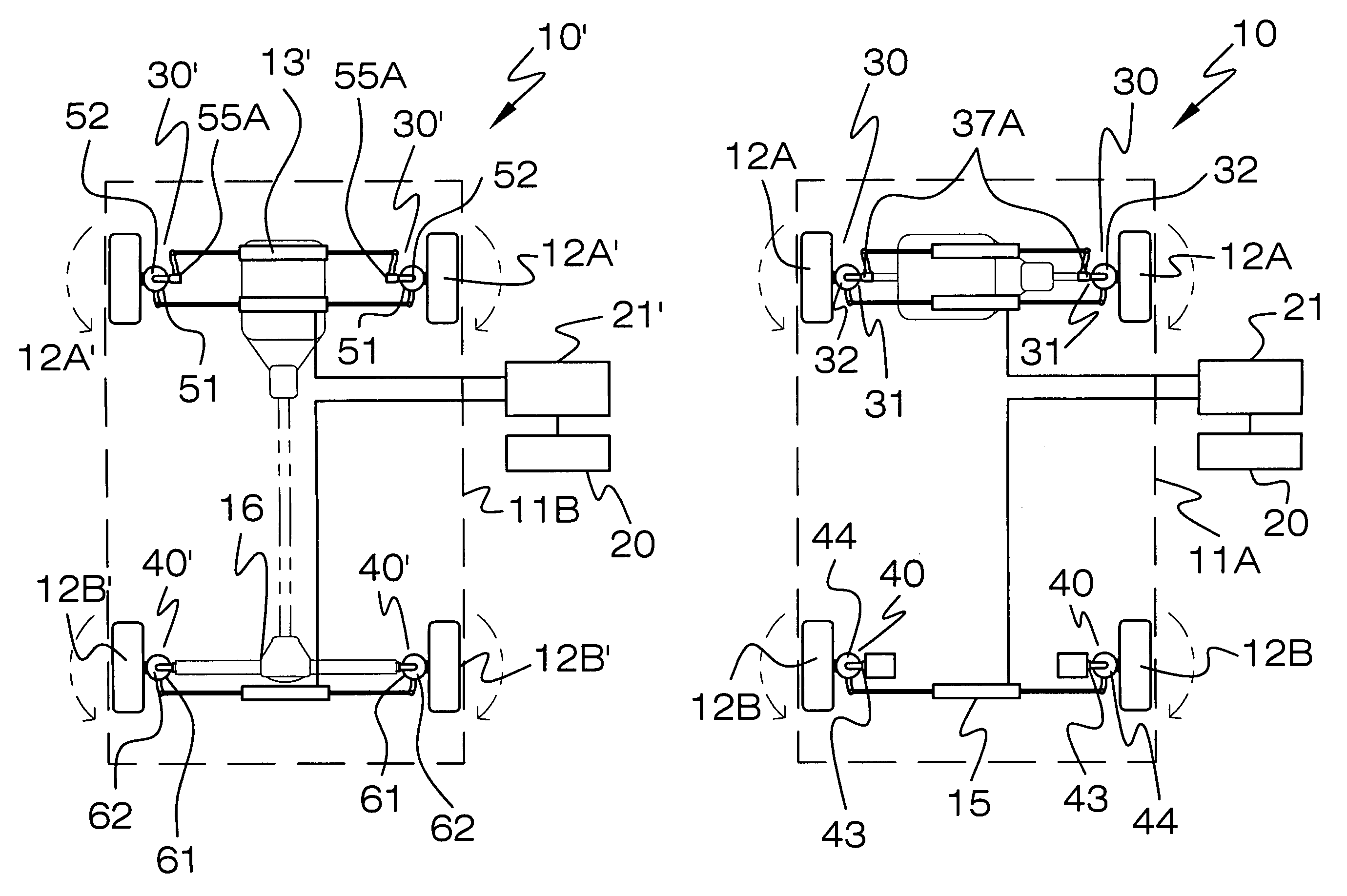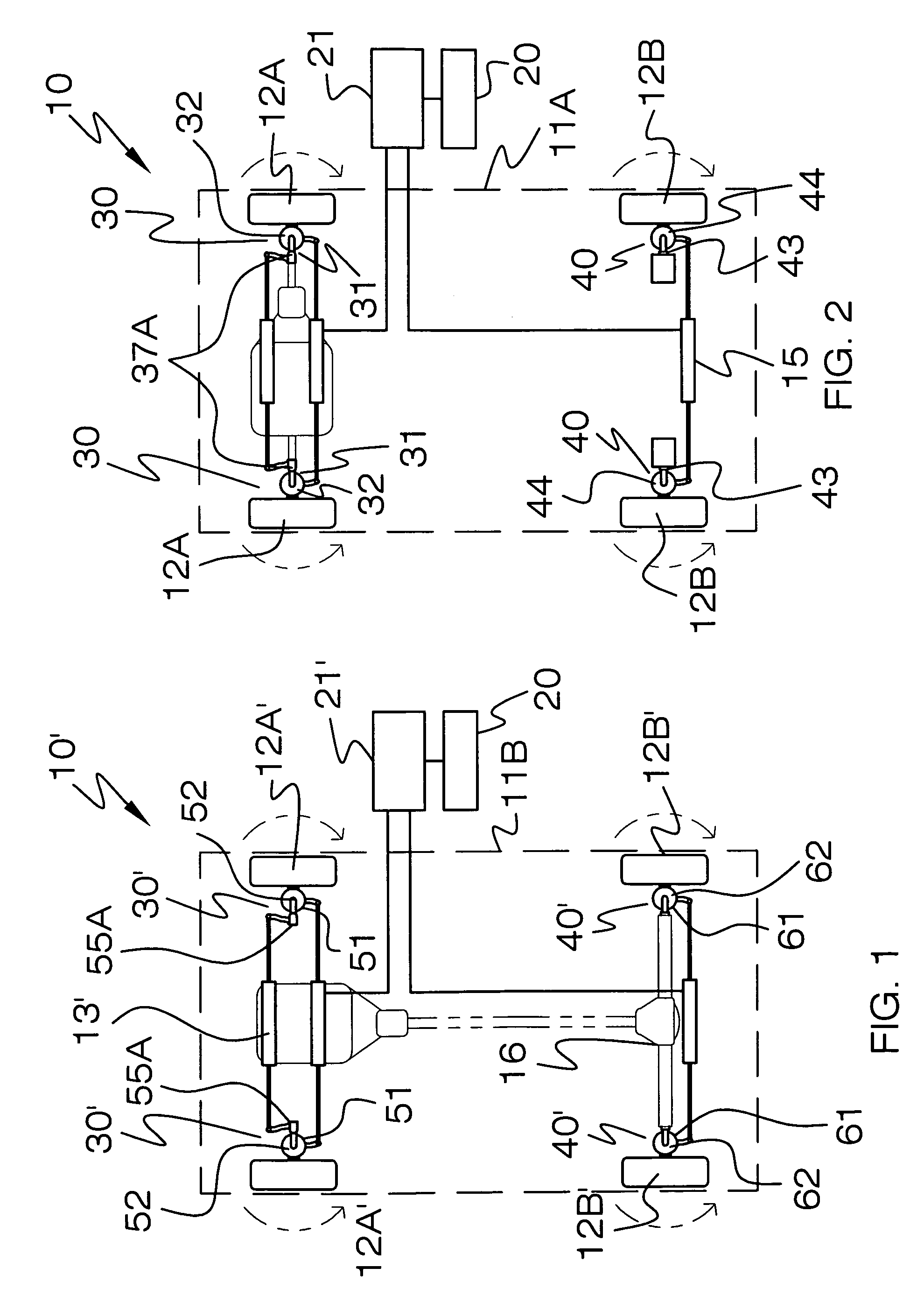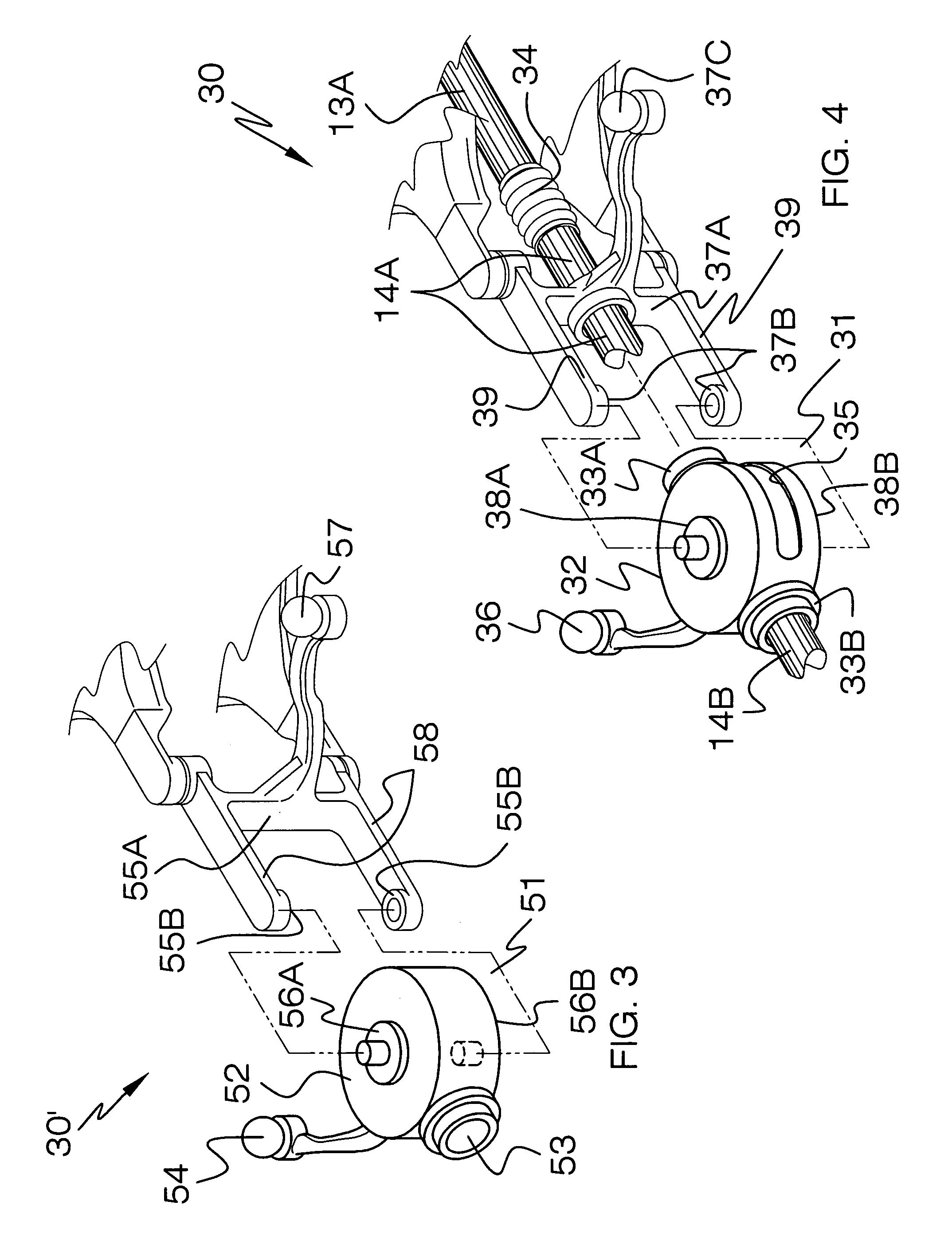Auxiliary steering system for vehicles
a technology of auxiliary steering and vehicles, which is applied in the direction of steering initiation, vessel construction, instruments, etc., can solve the problems of difficulty in encountering, high cost, and the risk of striking the cars parked fore and aft of the limited space, and achieve the effect of displacing the associated
- Summary
- Abstract
- Description
- Claims
- Application Information
AI Technical Summary
Benefits of technology
Problems solved by technology
Method used
Image
Examples
Embodiment Construction
[0044]The present invention will now be described more fully hereinafter with reference to the accompanying drawings, in which preferred embodiments of the invention are shown. This invention may, however, be embodied in many different forms and should not be construed as limited to the embodiments set forth herein. Rather, these embodiments are provided so that this application will be thorough and complete, and will fully convey the true scope of the invention to those skilled in the art. Like numbers refer to like elements throughout the figures and prime numbers refer to alternate embodiments of such elements.
[0045]The system of this invention is referred to generally in FIGS. 1-9 by the reference numeral 10 and is intended to provide an auxiliary steering system for vehicles. It should be understood that the system 10 may be used to provide lateral movement of a vehicle in many different types of situations and should not be limited in use to only parallel parking situations.
[0...
PUM
 Login to View More
Login to View More Abstract
Description
Claims
Application Information
 Login to View More
Login to View More - R&D
- Intellectual Property
- Life Sciences
- Materials
- Tech Scout
- Unparalleled Data Quality
- Higher Quality Content
- 60% Fewer Hallucinations
Browse by: Latest US Patents, China's latest patents, Technical Efficacy Thesaurus, Application Domain, Technology Topic, Popular Technical Reports.
© 2025 PatSnap. All rights reserved.Legal|Privacy policy|Modern Slavery Act Transparency Statement|Sitemap|About US| Contact US: help@patsnap.com



